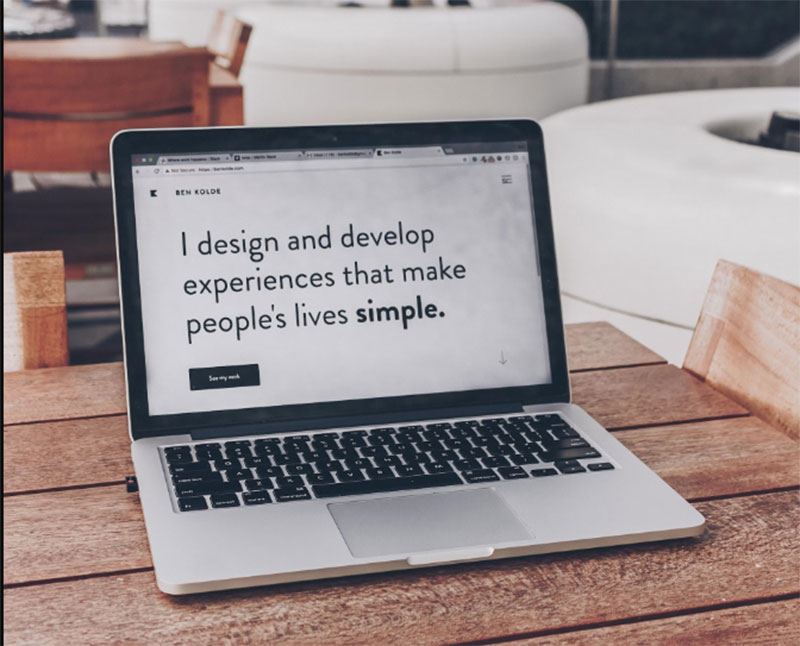How to Choose the Right UX Design Course for You
Every site has an agenda. Sometimes, this agenda is to generate sales, but even if it’s just to raise awareness or provide entertainment, its success greatly depends on its efficiency. Speaking of which, there’s no better way to improve the efficiency of a website than to improve its UX design.
So, why are so many people interested in learning UX design? The most straightforward answer is that those sites that manage to get UX design right have more satisfied visitors. In turn, they return more often, interact more willingly, and become more susceptible to any offer on the site. This is why:
- All site owners can benefit from a UX design course.
- People looking to thrive in the job market need a UX design course.
Also, there’s a difference between UX design and UI design, and the most confusing part is that these courses sometimes come together. The truth is that UX is more about the user’s experience on their journey through your site, while UI design is more about actual design elements.

Again, it’s important to stress that we’re not claiming that one course is superior to others. This is entirely subjective and contextual. We’re trying to give you an unbiased set of criteria that will help you find the right course for you. With that in mind and without further ado, here’s what you should focus on!
Preliminary list of courses to improve design skills
First, you need to create a list of potential courses to improve design skills that you will narrow down later. A simple Google search will suffice if you know what you’re looking for. Still, you can’t just add any course to the list. Before you start, you need to have your list of basic requirements.
For instance, you may have a specific budget and need to acquire a particular skill set. Regarding budget, it all comes down to two things: how much you can afford to spend and how desperately you need the course. As far as the latter goes, the basic UX designer technical skills are:
- Prototyping
- Visual design
- Use of design software
- User research and usability testing
- Information architecture
- Application development
Now, depending on your requirements, you may only need some of these skills. Therefore, you need to personalize the list according to your agenda and requirements.

Also, the reason you need this course might impact the list. Some people take UX design courses to benefit their business, while others do it to enhance their CVs or pivot their careers. This is not just a factor you use in the equation; it’s the basis of your requirements list and something you build your entire plan on.
If you’re looking for a UX design course, chances are that you need it right away. So, it would be best if you didn’t take too much time to complete the list. Don’t get us wrong, a list you compile in five minutes will probably not be very good; however, you can’t afford to take six months to complete it.
Research the course
Researching every course on your list wouldn’t be time-efficient, so you first need to narrow down the list. Once you narrow it down to a few entries, you can start checking some boxes.
- First, you need to research their reputation in the industry. The simplest way to do so is to look for WOM. If you know someone who has completed the course, talking to them should be your first stop. Next, you need to look for reviews. While not as reliable, these may contain a ton of specific knowledge that you can use to make your deduction.
- Second, you need to inquire about the certification that they offer. Sure, it’s knowledge and not the certificate that is your priority, but the truth is that you should never be asked to choose between the two. The best thing is that they should mention their certificate relatively early on. You can look up if the certification in question is recognized and valued.
- The third thing you should look into is the budget. Only some UX design courses are priced the same, and you would be surprised at just how wild some of these price differences can get. It’s also wise to start by setting your budget (how much you’re willing to spend on the course).
- Different people have different learning styles. While it’s intuitive that these are e-learning courses we’re talking about, some offer classroom-based experiences. Admittedly, the majority of people probably want something more convenient. Still, it’s always nice to have a choice.
By just considering these four factors, you’ll better understand the course you’re applying for. Not only will you be able to see the price, but you’ll also get an idea of the money’s worth that you’ll be getting.
Make comparisons
Chances are that you’ll be able to bring the number down to a few choices. In this scenario, you can make direct comparisons between courses. For instance, compare the cost of a course X to that of a course Y. This will give you a general idea of which of the two is less expensive. Then, you compare their duration, teaching style, rating, etc.
We pushed this tip so far down because you need a reference point before you start making comparisons. During the list-making and research, you’ll get a general idea of things like:
- How long do these courses take to complete
- How much they cost
- The number of live workshops with design leaders
- Availability of self-paced learning
The cost is only a part of it, considering how some courses may have payment plans and discounts. For instance, you may be offered a discount for making a payment at once, while others may offer you more monthly payments.
Some courses offer a free trial period. A chance to try a course for free and see if you like it is not to be underestimated. It goes even further; you see, the fact that a free trial is offered means that the course owners are confident in what they have on offer.
Another thing you should highly rate on your list of preferences is the mentorship program. You can do a background check on the potential mentors and, if you like what you see, recognize this as a unique opportunity. Contact with top professionals is invaluable.
Consider your schedule
There’s a massive difference between a UX bootcamp and an online course with flexible lesson scheduling. Remember that you might still have a full-time job and other responsibilities, so you need a course you can squeeze into your schedule.
On the other hand, if you’re looking to change jobs and find something that heavily depends on your UX design skills, you might want to get it over with as soon as possible. In that particular scenario, you would look for the most intensive course, allowing you to master UX design in a matter of months. Remember that just learning UX design won’t get you a job. You’ll also have to figure out what criteria employers use when hiring UX designers in 2023 and embark on a relentless job hunt.
That’s right, even on a most intensive course, it will probably take months. It’s also one more reason why you can’t afford to skip the research and randomly pick a course. In other words, arm yourself with patience and understand that this is a serious commitment.
At the very least, depending on your course and attendance, it might take one to four months. On the other hand, longer courses can take 24-40 weeks.
Add-on courses and learning materials
Cross-selling is more than just a retail thing. The UX bootcamp that you choose might offer an additional specialization course. For instance, along with the UX bootcamp, you may also be presented with a UI design course at a discounted price. Even without a discount, a course recommendation from a reputable UX design course is a solid WOM. It may allow you to effortlessly streamline your education in this field and skip the need for vigorous research on the next instance.
It’s also wise to consider whether you’ll receive all the learning materials and in what format. If you have to buy the materials independently, you’ll have to revisit the budgeting step. Sometimes, it won’t even be a matter of the cost of materials but their availability. Either way, it’s a thing you should inquire about early on.

You will also have to learn your way around some of the best UX tools. At the very least, you should focus on the following:
- Figma
- Adobe Photoshop
- Adobe Illustrator
However, tools like InVision, Proto.io, and Sketch can be just as valuable. Sure, premium versions of these tools aren’t free, but since you’re already paying for the course, it wouldn’t be logical to skim on the tools.
Taking the right UX design course is sure to fast-track your career
In the end, you need a UX design course, regardless of whether you’re just looking for a job or hoping to improve your website. Still, needing a course and knowing which to pick are not the same. So, follow this roadmap to make it easier:
- Start by deciding your objectives and setting your budget.
- Do some quick Google research and make a list of potential courses.
- Research each course individually and compare them to one another.
- Take some time to consider matters like scheduling and learning materials.
With these factors out of the way, you should have a pretty easy job picking the right course.
Author bio
By Srdjan Gombar
 Veteran content writer, published author, and amateur boxer. Srdjan is a Bachelor of Arts in English Language & Literature and is passionate about technology, pop culture, and self-improvement. His free time he spends reading, watching movies, and playing Super Mario Bros. with his son.
Veteran content writer, published author, and amateur boxer. Srdjan is a Bachelor of Arts in English Language & Literature and is passionate about technology, pop culture, and self-improvement. His free time he spends reading, watching movies, and playing Super Mario Bros. with his son.